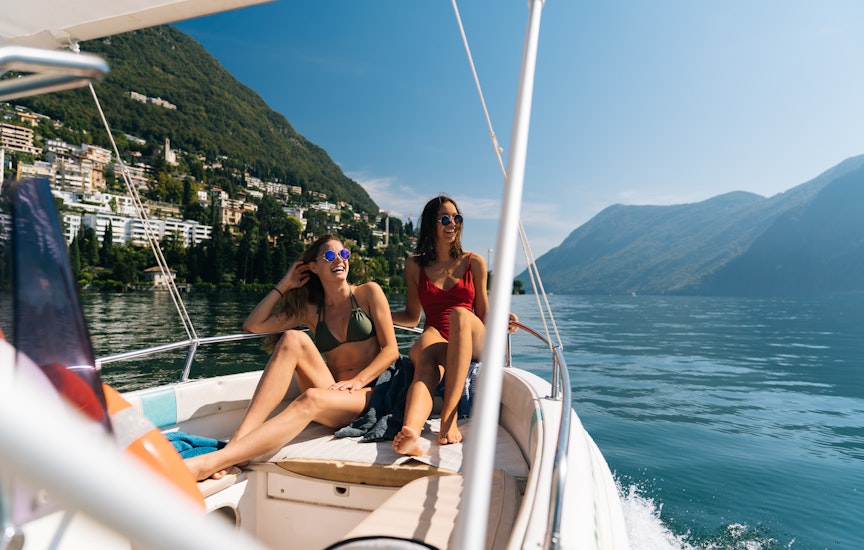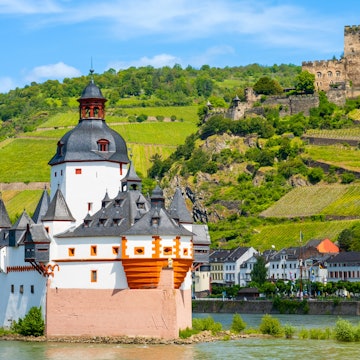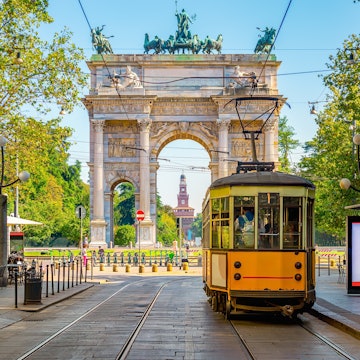
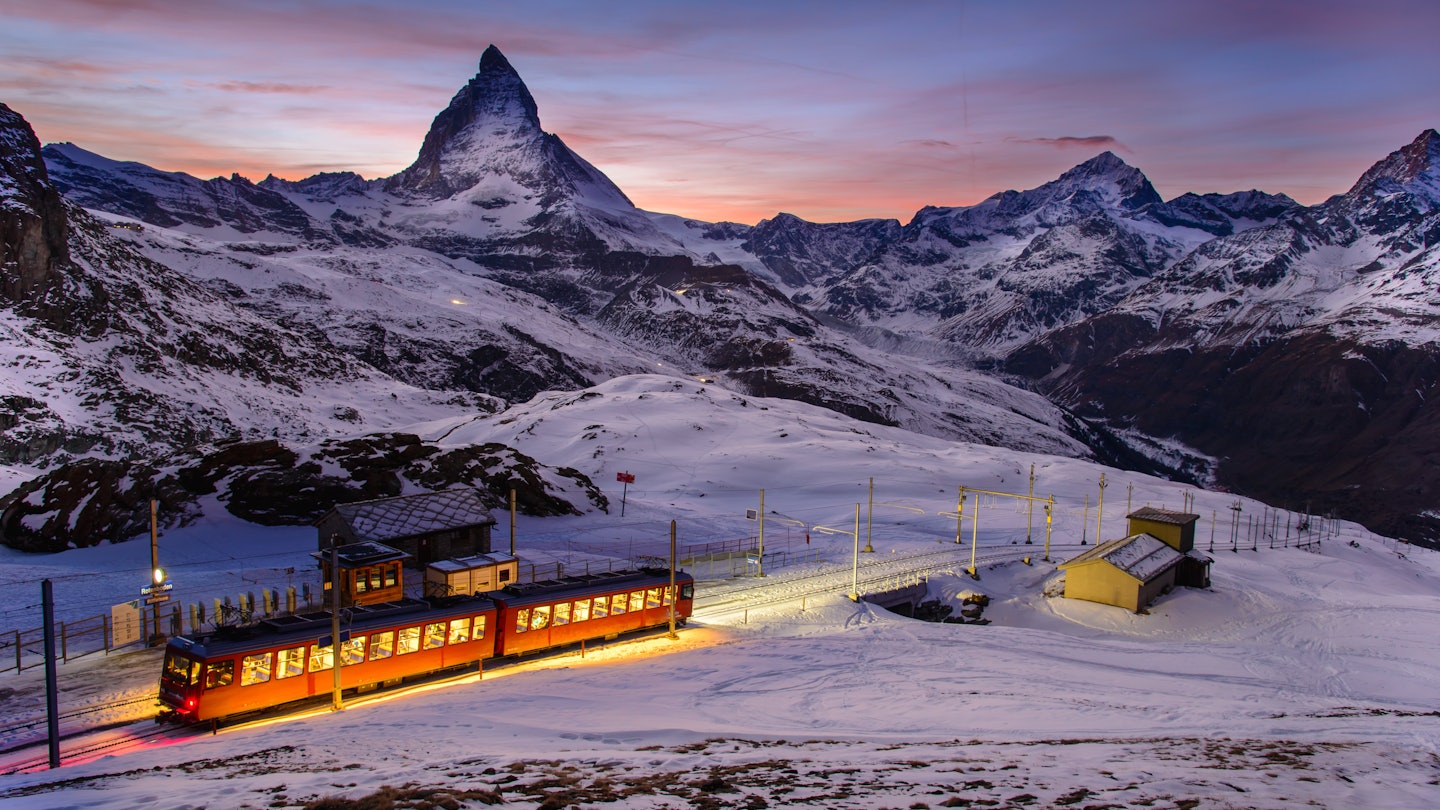
The Gornergrat Railway, Switzerland. Suphanat Wongsanuphat/Getty Images
There’s a romance to train travel that no other form of transportation offers. Pick the right route and instead of just being about getting from A to B, your journey becomes an intrinsic, enjoyable part of the greater travel experience – sitting back, relishing the views, sipping a drink, letting someone else deal with the practicalities.
And nowhere does spectacular rail routes better than Switzerland, a small country with a big, efficient transportation system to be envied and scenery to enchant. Here’s our selection of the best train trips you can do there and some of the highlights along the way, concentrated in the country’s south where the scenery is arguably at its most stunning.

1. The Bernina Express
Route: Chur to Tirano
Best bit: Taking in the breathtaking panoramas at the ride’s highest point, the namesake Bernina Pass
Distance: 144km (90 miles)
Duration: 4 hours 30 minutes
The Bernina Express, named after the 2328m-high (7638ft) mountain pass it traverses, is a classic train ride in Switzerland’s southeastern linguistic melting pot. The full journey runs from Chur, south to the northern Italian town of Tirano, but a shorter, very scenic day trip can easily be made on the section from swanky, German-speaking St Moritz through Alpine peaks to the Italian-speaking town of Poschiavo. Stop for a stroll around the latter and enjoy some tasty pasta or pizza (you’re just 13km/8 miles from the border with Italy so you know it’s going to be good) at the Hotel Albrici restaurant in the town’s set-piece central square. And just when you’ve figured out which language to speak in which area, you might hear locals speaking Romansch. Switzerland’s fourth, but least known, official tongue is spoken by around 20,000 people in this area (and within those, it’s split into different dialects, just to add to the fun).
Back on the train you can just sit back, enjoy the scenery and listen to the onboard commentary detailing the route’s history and highlights. For something off the beaten path on your Bernina day out, choose a station at random and press the Stop On Request button to get off and do some DIY exploration – most stations have panels giving local information and hike suggestions.

2. The Glacier Express
Route: St Moritz to Zermatt
Best bit: Catching your first peek of the iconic Matterhorn as the train nears Zermatt
Distance: 290km (180 miles)
Duration: 8 hours
Since it opened in 1930, the Glacier Express has been the jewel in the crown of Switzerland’s train trips and one of the world’s great rail rides. Running from St Moritz (so you can add it on to a Bernina Express journey) to Zermatt, another of the country’s top winter sports centers, its unrivaled views of the Swiss Alps are matched only by the astonishing feats of engineering that made the route possible in the first place. The latter is best exemplified by the Landwasser Viaduct, a gravity-defying six-arched bridge between Tiefencastel and Filisur, while nature’s showstoppers include the Oberalp Pass (2033m/6670ft), where the train usually makes a stop to allow passengers to alight and take in the spectacle, and the Mattertal, Switzerland’s deepest canyon.
Whatever class of carriage you’re in, this is a wonderful journey, but to really make it a once-in-a-lifetime experience, consider an upgrade to Excellence Class. You know you’re in for special treatment when you board via a red carpet and things just keep getting better from there – huge windows for maximum views, a five-course meal and a tablet giving route details and background information are just a few reasons to pay the extra.

3. The Gornergrat Railway
Route: Zermatt to Gornergrat
Best bit: Admiring the head-spinning mountain vista from the upper train station
Distance: 9km (5 miles)
Duration: 30 minutes
Pretty-as-a-picture Zermatt is Switzerland’s other (along with St Moritz) glitzy ski resort. Its advantage over its eastern counterpart is the looming, hypnotizing contortion of a mountain, the Matterhorn (4478m/14,692ft), which dominates the skyline. The mountain is known to many from its starring role on the Toblerone box, and turning a corner in Zermatt and catching an unexpected glimpse of this magnificent peak never gets old.
But for an even more impressive view, jump on the Gornergrat Railway and head up the mountain of the same name. This narrow-gage line opened in 1898 and still climbs a formidable 20% gradient on some sections before depositing you at a lofty 3089m (10,134ft) above sea level. High as this is, the Gornergrat is actually a minor mountain around these parts, sitting perfectly in the middle of a 360-degree panorama that takes in 29 4000m-plus (13,123ft) peaks (out of a national total of 49). Most notable is the Matterhorn, but higher, if less visually arresting, is the country’s tallest mountain, Monte Rossa, topping out at 4634m (15,203ft). You can stay the night in the hotel at the top of the Gornergrat (and enjoy stargazing under light-pollution-free skies), enjoy a meal on the terrace or ski back down, trying not to be too distracted by the natural wonders all around you.

4. The Schilthorn
Route: Stechelberg to the Schilthorn
Best bit: Pretending to be 007 at the top
Distance: 5.6km (3.5 miles)
Duration: 30 minutes
We’re widening our definition of "railway" here because the awesome series of cable cars that whisk visitors up the Schilthorn mountain really deserves to be on this list. The trip to, and views from, the peak have a "license to thrill", and we make no apologies for the terrible pun because this area is so beautiful that it caught the eye of the James Bond team who made On Her Majesty’s Secret Service here in 1968 – and if it’s good enough for 007, it’s good enough for us.
The only Bond film to star George Lazenby as the secret agent, many of the movie's scenes were shot in the Piz Gloria revolving restaurant at the summit, which is little changed today. Spies aside, it’s the views from the 2970m (9744ft) top that draw visitors here, a magnificent parade of Alpine celebrity summits including three of the best known: the infamous Eiger (though the notoriously difficult-to-climb north face of the "ogre" is hidden from this angle); the Jungfrau (young maid); and the Mönch (monk).
The cable cars that bring you up connect with seamless Swiss efficiency at the various stations en route. At one of these, Birg, it’s worth getting off to test your head for heights on the cliff-clinging Thrill Walk, complete with glass floors and a rope bridge over a dauntingly high drop (don't worry, there's a net).
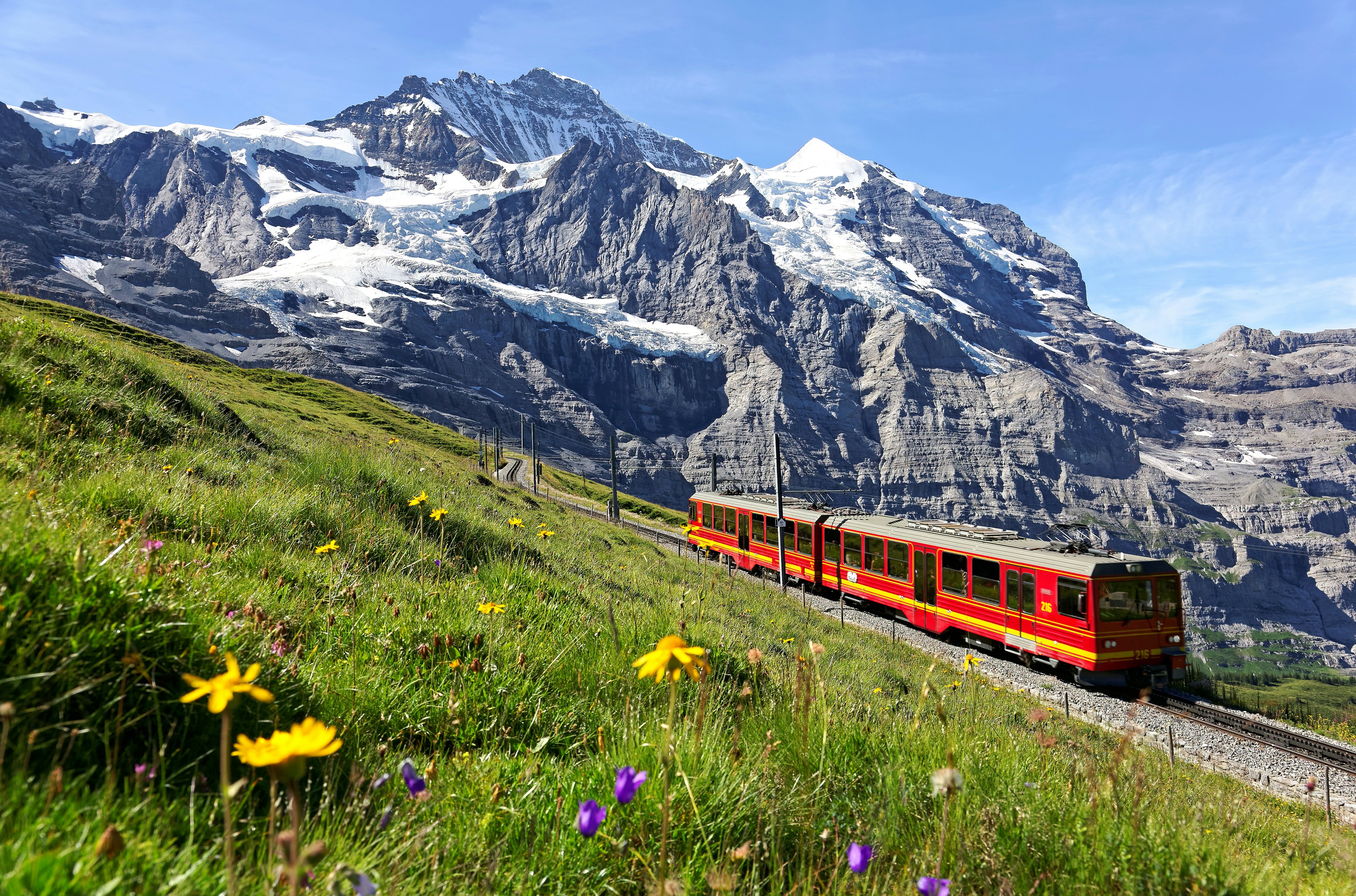
5. The Jungfrau Railway
Route: Kleine Scheidegg to the Jungfraujoch
Best bit: Traveling inside two mountains
Distance: 9.5km (6 miles)
Duration: 40 minutes
If you simply can’t get enough of the magnificent mountains you’ve spied from the Schilthorn, enjoy a similarly memorable train-with-a-view experience on the Jungfrau Railway where you actually get to travel inside them. As you’d expect from the highest railway in Europe, the journey is breathtaking (literally at this altitude), though for a good section of the trip the views are restricted to the interior of a tunnel – not just any tunnel though. This is one of the train world’s most incredible creations, the Jungfrau Tunnel, carved through the Eiger and Mönch mountains as a way of protecting the rail service from the extremes of weather all too frequent at these heights.
You can start your journey in the charming towns of Grindelwald, the place to arrange outdoor activities, or Lauterbrunnen, at the head of a gorgeous, waterfall-filled eponymous valley, both of which have effortless connections to Kleine Scheidegg, jumping off point for the railway proper. End of the ride is Jungfraujoch Station, sitting in a saddle between peaks and offering vistas only matched by the engineering marvel that got you up here in the first place.
Buying train tickets in Switzerland
Trains aren’t cheap in Switzerland, and buying individual tickets for routes can see costs climb as high as the Alps. Your best option therefore is to get a Swiss Travel Pass. There are a few different versions, but the main pass gives almost unlimited use of all forms of land and water transport in the country, plus entry to hundreds of museums, making it well worth the investment. Prices start from CHF244 (US$296) for three consecutive days’ travel in second class to CHF723 (US$878) for a 15-day, first-class pass. Families can benefit too from buying the pass – for every paying adult, a child aged 6–15 travels free. If you just want to show up and start riding those rails with someone else taking care of the logistics, many companies offer bespoke packages.






